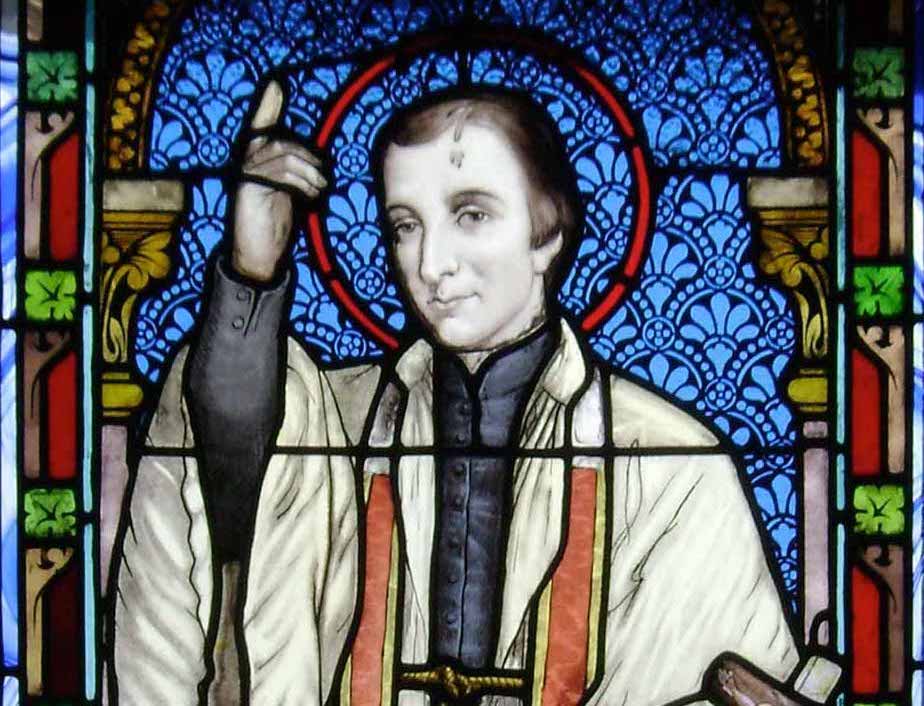
Not Bishop Sycamore. Photo: Tauʻolunga, CC BY-SA 3.0, via Wikimedia Commons

Not Bishop Sycamore. Photo: Tauʻolunga, CC BY-SA 3.0, via Wikimedia Commons
Amid a controversy last weekend when the Bishop Sycamore High School football team played IMG Academy in football, a lot has been written about that school. But what about the Bishop Sycamore from which this school has drawn its name? What does anyone really know about Bishop Sycamore the man?
My “research” found the life of a holy man, but a man with a dark cloud shading his legacy. For that, many are calling for the cancellation of Bishop Sycamore, demanding that his name be taken off every school in the country bearing his name.
Bishop Sycamore was a French priest who came to North America in the early 1700s on a Catholic mission to New France.
As a young priest Father Foutaise, as he was known then, traveled across the Atlantic and arrived in Montreal. From there he traveled down the St. Lawrence River and over land to the French Fort at Detroit where he spent time converting the local indigenous population.
A few years later, he helped establish another French outpost on the future site of Toledo, Ohio. But he wanted to push his faith further eastward along Lake Erie. Thousands of miles away Pope Clement XI was so impressed by his missionary work that he elevated Father Foutaise to bishop to administer the area of New France along the Great Lakes.
He received the letter elevating him to bishop in 1710 while he was standing under a Sycamore tree. He was so moved that he took the name Bishop Sycamore. He built a small chapel and village on that site along the shores of Lake Erie not far from present-day Cleveland. They called it “Erreur Sur Le Lac.”
The chapel stood on that site for a decade before a raid by English colonists burned it down, marking the first of many victorious raids into northeast Ohio by forces from western Pennsylvania. Local lore has it that the cedar-colored uniforms of Bishop Sycamore’s militia were called “browns” and they referred to the thieving marauders from Pennsylvania as “stealers.”
The post at Erreur Sur Le Lac was vibrant, trading in furs and lumber. But soon the surrounding area was cleared of fur-bearing animals, deforested of trees and the once-thriving settlement fell on hard times.
Around this time Bishop Sycamore fell in love with a French woman who’d become widowed when her fur trapping husband was killed in an attack by a group of rabid beavers. The bishop was so taken by her beauty at the funeral that he struck up a friendship. She and her two sons were so despondent that Bishop Sycamore renounced his vows to marry her.
Upon leaving Ohio, he and his wife lived in Montreal until his death in 1742. Now centuries later a trove of Bishop Sycamore’s writings have been found in an archive of McGill University in Montreal.
During recent examinations of his archives, controversy has exploded around the life of the heretofore revered Bishop Sycamore. And the re-examination has led to calls to cancel Bishop Sycamore based on key documents from his life.
For his decision to support the fur industry, and wear fur, he has been labeled a “fur enabler.” He has been attacked for cultural and arboreal appropriation for taking the name Sycamore. And environmental groups have denounced him for deforesting large tracts of land.
And now FIFA has weighed in with threats to sanction soccer teams from France, Canada and Vatican City in the next World Cup for violations committed by Bishop Sycamore. These sanctions stem from his conduct as a coach.
In Montreal he coached a private school team of players in a sport that was the forerunner to modern soccer. The team of players dominated the local leagues winning the New France Cup for five straight years from 1727 through 1731.
His papers now show that his team rosters were comprised of a small group of students from the private school where he taught, but also by a number of “ringers” who were local fur trappers and lumberjacks aged 23 through 30.
The papers also prove that the bovine bladders that were used as the soccer ball had less stuffing than the rules required. The deflation was a major advantage. The lower stuffing levels allowed his older team better bladder control against younger players for whom bladder control was not an issue.
These are just the controversies that have been uncovered so far. So, while the controversy over the high school that bears his name is likely to recede in time, the stain on Bishop Sycamore’s personal legacy is certain to remain every bit as real as the biography written above.
Receive all the latest news and events right to your inbox.

80% of consumers turn to directories with reviews to find a local business.